#Aegina island
Explore tagged Tumblr posts
Text

Saronic beauty - Aegina, Greece
#greece#aegina#saronic gulf#greek islands#saronic islands#travel#wanderlust#places#europe#hellas#statue#sculpture#female body#photography#flowers#plants#bougainvillea#floral#classic#aegina island#art
76 notes
·
View notes
Text

Explore the influence of Mediterranean mythology on contemporary storytelling at Invisible Myths, a one-week film workshop on Aegina Island. This program is designed for participants with basic filmmaking experience who are interested in examining ancient narratives and their modern implications.

Led by experienced filmmakers and mentors, the workshop includes creative-writing sessions, film screenings, and analytical discussions. Participants will learn the processes of conceptualizing, shooting, and editing short films, with a focus on developing both individual directorial perspectives and collaborative skills.

The workshop offers a structured approach to improving technical skills and cinematic knowledge. By the end of the program, participants will have produced a short film, which will be showcased at an outdoor cinema in Aegina.

This workshop is open to young filmmakers (18-23 years old) and individuals of all ages who seek to enhance their filmmaking capabilities in a collaborative environment.

#workhop in Greece#Summer camp in Greece#summer camp Greece#Short films#shooting#Mythology#mentorship#Mediterranean landscape#Greece filmmaking#greece#filmmaking#film workshop#Creative-writing#Creative expression#creative camp#Cinematic skills#cinema school#Cinema#Aegina Island
0 notes
Text
GREECE
Athens and Aegina Island. Greece was an appropriate follow-on to Egypt because of the impact they had on ancient Egyptian culture…Alexander the Great = Alexandria Egypt, and the Cleopatras are the most well-known examples. But there was little evidence of it in Athens. We saw the classical Greek ruins – the Acropolis for example – and even some Roman influence, as well as very old Athenian buildings walking around Plaka and Monastiraki.
0 notes
Text
Tomb of Mycenaean baby girl found in Aegina island
A rare find of the tomb and remains of a female infant (12 - 16 months old) with Down syndrome and some other serious skeletal disease, dating from the late Mycenaean period (13th century BCE) was recorded in Aegina island, Greece. The little girl was buried wearing an intricate necklace with 92 beads*, indicating the baby received love and care during her short life and her death, despite her critical condition. This is the first record of a Down syndrome incidence in antiquity in Greece.
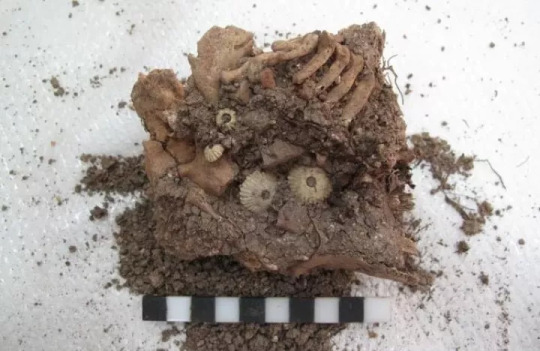
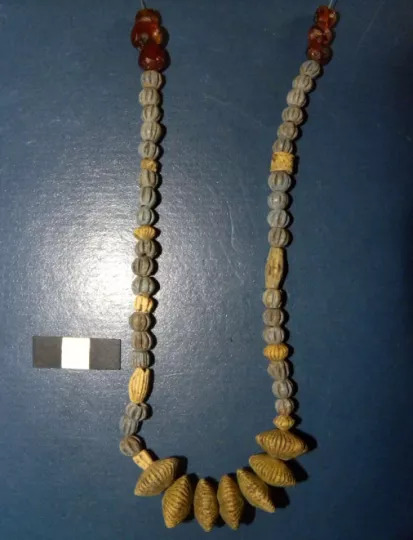
*According to the source. Perhaps not the entirety of the necklace is visible in the photo.
Source
#greece#europe#ancient greece#mycenaean civilisation#mycenaean greece#ancient finds#tw death mention#tw illness#greek history#aegina#saronic islands#sterea hellas#central greece#greek islands
44 notes
·
View notes
Text
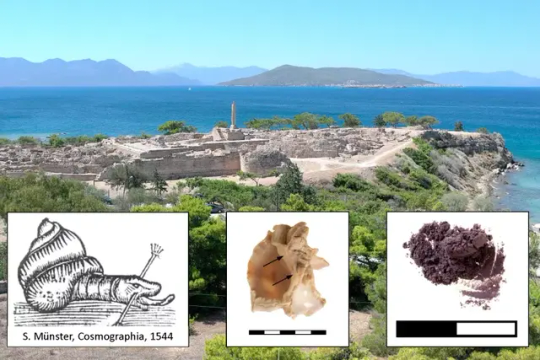
In This Ancient Workshop, Greeks Crushed Snail Glands to Make the Purple Dye Worn by Royalty
Archaeologists discovered remnants of a 3,600-year-Old Dye factory on an island in Greece.
On an island in Greece, researchers have discovered a 3,600-year-old workshop that once turned out a rare purple dye coveted by royalty—and made from snail glands.
Archaeologists were excavating recently in the Bronze Age town of Kolonna, on the Greek island of Aegina, when they discovered two Mycenaean buildings. As the researchers write in a study published in the journal PLOS ONE, the buildings date to the 16th century B.C.E., and the older one contained pigmented ceramics, grinding tools and heaps of broken mollusk shells: all indicative of a purple dye factory.



In this workshop, ancient Greeks produced the vibrant pigment known as Mycenaean purple—or, as the Romans called it, Tyrian purple. First manufactured by the Phoenicians in present-day Lebanon, the dye was extracted from the mucus of the Mediterranean’s carnivorous sea snails. Across the region, only the rich owned anything dyed Mycenaean purple, as the color’s production was painstaking.
As Roman historian Pliny the Elder once wrote, thousands of snails were required to produce a single ounce of purple dye. Its creators had to crush snails’ shells, extract their tiny glands, mix them with salt water and let the concoction steep in the sun, per the study. The result was a “deep purple, lilac or dark red color,” which was used on textiles and paintings, study co-author Lydia Berger, an archaeologist at the University of Salzburg, tells Popular Science’s Laura Baisas.
The fragments of pottery the researchers found on the site were probably containers for dye. As Berger notes, the pottery’s pigments are so high-quality that they could still be extracted and used to dye clothing today. The site also contained stones used for grinding, a waste pit and piles of crushed snail shells.
Eventually, snail purple would become the color of royalty. In the first century C.E., Roman Emperor Julius Caesar named Tyrian purple his official color and inspired successive emperors to don the same hue. But back in the 1500s B.C.E., the color was just beginning to be produced.


At the time, Kolonna was a dense, fortified small town, says Berger, whose inhabitants produced and traded lots of different handcrafted products and raw materials like Mycenaean dye, which wasn’t yet exclusive. Though the dye factory is in an urban area—an oddity among dye workshops—its coastal location is ideal for purple production. As the researchers write, snails had to be caught and kept alive until their glands were harvested.
By analyzing the shells in this particular workshop, researchers concluded that just one snail species was used there: the banded dye-murex. Interestingly, it wasn’t the only animal killed at the site. As Newsweek’s Aristos Georgiou writes, archaeologists also found the burnt bones of several piglets and lambs. Researchers suggest these young mammals were sacrificed in the workshop as part of a ritual, meant to somehow bless the dye’s production.
As they write in the study, the ancient site not only proves that purple dye was manufactured in cities, but also provides “new insights into the technological and possibly spiritual background of the process.”
By Sonja Anderson.

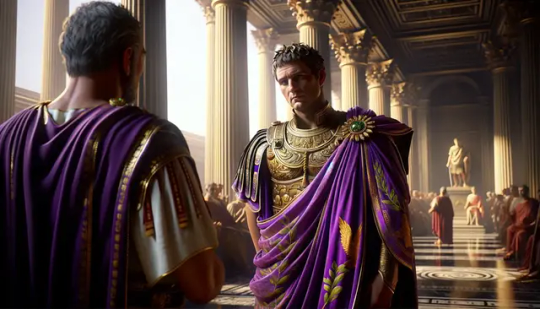

#Archaeologists Discovered Remnants of a 3600-Year-Old Purple Dye factory in Greece#Bronze Age town of Kolonna#Greek island of Aegina#purple#Mycenaean purple#Tyrian purple#ancient artifacts#archeology#archeolgst#history#history news#ancient history#ancient culture#ancient civilizations#ancient greece#greek history
22 notes
·
View notes
Text
📍Aegina island, Greece 🇬🇷
@giorgos_petakos
Καλημέρα Ελλάδα 🇬🇷
#travel #travelingare #dronephotography #argosaronikos #aegina #island #greece
#lifestyle#myuploads#aesthetic#travel#travelingare#photography#architecture#drone photography#kalimera ellada#aegina#island#greece#argosaronikos
10 notes
·
View notes
Text



Temple of Apollo, Aegina
Saronic Gulf, Greece
October 2022
#Greece#Ancient Greece#tagamemnon#Apollo#history#Aegina#Greek islands#Greece travel#Hellenic Polytheism
99 notes
·
View notes
Text

#greece#ελληνικο tumblr#greek posts#greek summer#greek tumblr#greece travel#visitgreece#ελληνικο ποστ#greek quotes#aegina#saronicgulf#greek islands
33 notes
·
View notes
Text
📍Aegina

Market by the summer sea🐚
Aegina (Αίγινα) Greece 2024
2 notes
·
View notes
Photo

The Temple of Aphaia, Aegina - Greece
#aegina#sanctuary of aphaia#hellas#ancient grrece#history#ancient ruins#ruins#sanctuary#temple#saronic islands#travel#greek islands#wanderlust#columns#architecture#greek temple#culture#attica#aphaia#greece
495 notes
·
View notes
Text
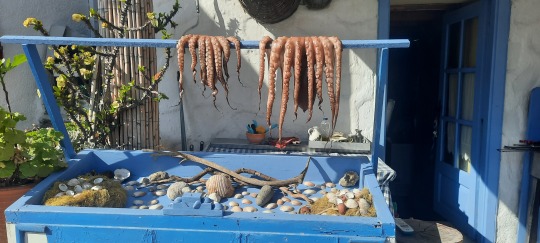
#live your myth in greece#octopus#fish#taverna#food#blue#aegean#greek island#greece#aegina#sunny#sun#greek sun#greek summer
26 notes
·
View notes
Text


Barefoot
#greece#ellada#barefoot#sea and sun#seaview#sea side#sealife#sea salt#sea#sea view#seaside#sea life#island life#wet#saltyair#salty air#salty talks#salty speaks#island#aegean sea#aegina#rocks#beach waves#beachlover#beachstyle#beachday#beachside#beach house#beachlife#beach babe
3 notes
·
View notes
Text



Aegina Island - a short hydrofoil ride from Piraeus, the port city of Athens
0 notes
Text
Man of God: A review
After three years since its release (time flies 😳) I decided to finally watch Man of God and see for myself what all the praise and all the criticism were about. For those who don’t know, Man of God is a Greek - Russian movie about the life of Saint Nektarios of Aegina island.
The information around the reception of the movie has been jarring with most believers speaking of a rare masterpiece while most atheists spoke of one of the most terrible movies full of propaganda they had ever seen etc
Much to my dismay, this was another reminder that in this country atheists / agnostics are not any more reliable than fiercely religious people.
The truth of course is somewhere in between. The film is decent, in no way a masterpiece and in no way the worst movie you will ever see. It can actually keep your attention well until the end. But you must KNOW why you watch it. Atheists complaining for the money they wasted on it, on a movie that was very obviously about a man supposed to have reached sainthood and be venerated as such, I am sorry but it is their problem if they could not figure out they would not be interested in the content.
I could even recommend watching this movie but only if you know why you watch it and only after I will briefly give you its pros and cons.
Pros:
The acting is pretty good. Some people criticised it, however the problem they saw and perhaps misinterpreted as bad acting was different and I will mention it promptly. In any case, the acting is good, the casting is mostly good, Ares Servetalis is generally well chosen as the main character. I also enjoyed Loulis, Karabeti and a very theatrical Stankoglou in their short roles. Mickey Rourke is the international star who makes a very short cameo here and he is also good.
This film is particularly good for the images and insight into Christian Orthodoxy it provides. There is complete accuracy regarding the vestments, the way both a solemn and true but also a deceitful priest typically act, the way the Synod, Ecclesiastical schools, the monasteries operate and so on. From this perspective, it was interesting to watch.
The make up is great. Saint Nektarios starts as a man in his early 40s and we see all the stages as he ages and his health deteriorates significantly very accurately. This is actually where Servetalis’ acting shines the most, too.
The cinematography is nice, it has pretty imagery from rural Greece and a few nice settings in religious buildings. It is nowhere near the level of views Greece can naturally and even religiously offer but it was overall aesthetically pleasing.
Despite its several flaws, the film was able to move me and cause me (suitable) discomfort in certain parts.
Cons:
This movie would be unanimously considered a lot better, had it not been for the frankly crazy idea to be filmed in English. So, you have a Greek movie with Greek actors playing Greek characters in a Greek setting in 19th-20th century Greece speaking English to each other. Even worse is the choice to sprinkle with a little Greek here and there, for example priests speak in English but chant in Greek, Nektarios visits a Greek woman and speaks to her in English but then immediately afterwards speaks to the maid in Greek (???what the hell), a drunken man sings in Greek and then addresses the priest in English. It’s frankly lunatic and I can’t believe how everyone - director, producers, screenwriters, actors - thought that just because the movie would have an international release, this was a justifiable decision.
Like I said, some people accused the movie of bad acting. Here’s the problem: the actors tried their best and mostly were very good, however they gave so much emphasis on the struggle to pronounce English as well as possible (it is a known fact that Greek speakers struggle with the English accents), that this was making their dialogues slow and very cautious which was obviously making dialogue heavy scenes seem very unnatural. It does not help at all that the protagonist has clearly one of the weakest English accents in the cast. Servetalis is furthermore naturally very soft spoken but while it is beautiful in Greek, in his weak English it just sounds weird. Heads up for Loulis though - his English was freaking amazing in my humble opinion. And in general, if you knew how much Greek speakers often struggle with English accents, you’d understand that most of the actors really outdid themselves. Hence, the acting is good.
The pacing and the script of the movie are just bad. The movie starts without giving the main character’s background at all and without giving any insight into how the animosity against him was developed amongst the other bishops of Alexandria. Then it’s mostly dialogue heavy and it’s through the dialogues that we explore the main character and so many people may feel they remain emotionally detached from him. In fact, Servetalis also interprets the character in a somewhat detached, suppressed, “hovering above the ground” way and although I totally understand this approach, it is not assisted with that poor script and the out of place English to make the audience feel connected to him more. The English script is also very unnatural, most of the responses are like “Yes, I will” and “No, I do not” as if we are back to English A1 Class.
I already said the settings were okay, however there was room for improvement. I hoped a Russian director would not follow the same typical preference of Greek directors for narrow frames and a lot of close ups but apparently not. Neither the rich Church funding this nor even Russia could help with the budget and finally get a Greek movie with big sets and wide camera shots?! lol 🥲 I will open a champagne the day we get such a movie.
There are some goofs, i.e Nektarios ages so much and everyone else remains in the same age XD
Regarding the Propaganda claim:
I suppose this came only by biased atheists because, no, there is actually no propaganda in the film. It is a Christian movie made for Christian and Christian-tolerant audiences, who either accept or are open to the established belief that Nektarios had performed miracles in his lifetime. And in fact, the reference to his miracles is surprisingly fleeting for a movie that is funded by the Church. It’s just one small scene and then one very short mention and that’s all. There is also nothing else that would make this movie eligible for propaganda accusations - Nektarios is firm in his faith of course and especially in his Jesus-like selflessness, other people around him express doubt or prefer pure reason. Some are good people and question religion. Some are evil people and question religion. But most importantly, many are priests and are straightforwardly portrayed as foul deceivers, traitors, liars etc. Not only do I not see propaganda in this but I was personally impressed by the Church’s admission of what kind of people often infest it (of course it helps that all these people lived 1-2 centuries ago lol). Of course, the movie does accept that he performed miracles and thus was holy. But it is a Christian movie about an established venerated Christian saint… right? If for example I watched a movie made about a religious figure by the believers of this - any - religion, should I not expect that the figure would be presented as admirable or even holy? I hope you get my point. If you know what you are watching and why you are watching it, there is no case you will find anything problematic in it.
Anyway, these were my thoughts regarding the movie. The general score it gets in IMDb, produced as the median from the extremely high and low ratings of believers and atheists respectively, is fairly accurate and what I feel would be my personal score as well: 7.
So if you are a Christian or a Christian Orthodox and considered watching this (all these three years before I came around to watch it 😅), sure go ahead!

Saint Nektarios of Aegina island
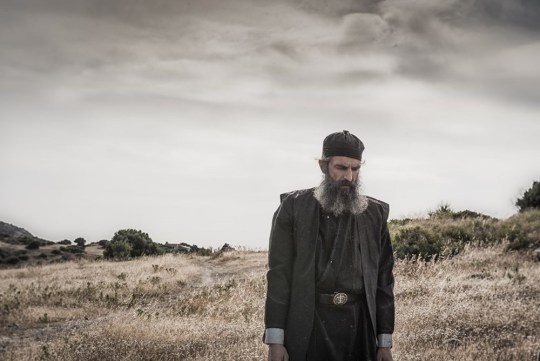
Scene from the movie
#greece#movies#Christianity#Christian orthodoxy#movie review#Greek movies#Greek cinema#Greco Russian movie#Saint Nektarios of Aegina#tw religion#Greek history#Greek culture#Aegina#saronic islands#Sterea Hellas#central greece#Greek islands#autocorrect changing saronic into satanic and then into sardonic SHUT UP 😂
11 notes
·
View notes
Text
think Proposal for any park/hotel/beach/tourist/real estate company and..more...

View On WordPress
#Aegina#art#basketball#business#cyprus#fiverr#greece#hotel#island#marketing#pafos#PAPHOS#PaphosCityOfKings#park#proposal#proposalForHotel/PARK/island/beach#service#tourism#touristCampaign
0 notes
